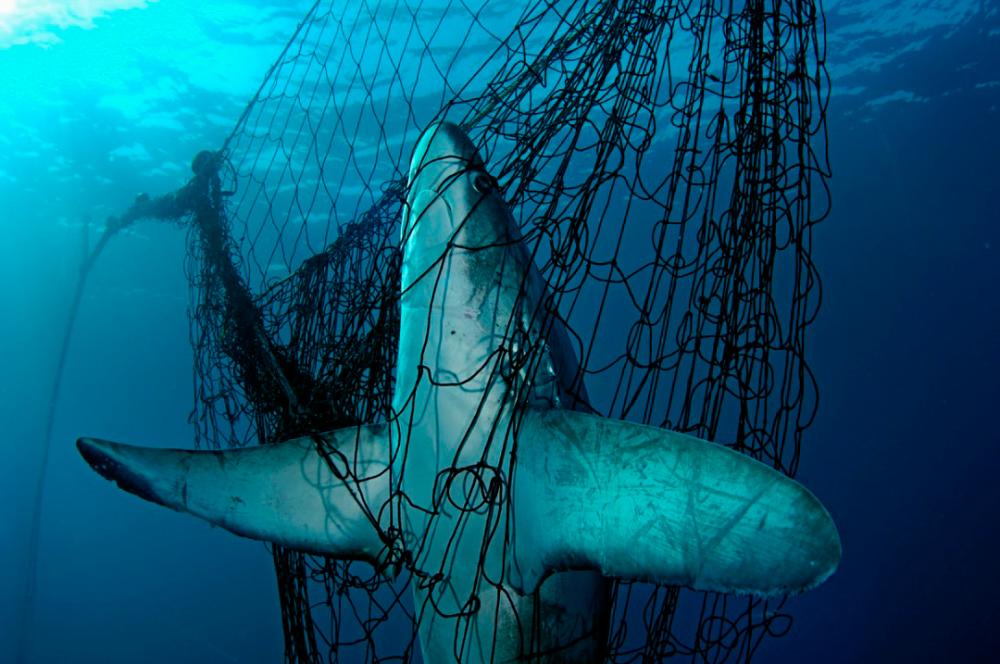PETALING JAYA: A global study has shown that sharks and rays are more threatened throughout the tropical coastal sea, including the Southeast Asia region, posing a risk to irreversible biodiversity loss.
The study conducted by the IUCN Shark Specialist Group, re-assessed the IUCN Red List status for all sharks, rays, skates, and chimeras (collectively known as chondrichthyan) and revealed that over one-third of all these species are now at risk of extinction caused by multiple threats, most notably by overfishing.
Overfishing is said to be intense and widespread throughout the Indian and Western Central Pacific Oceans, including Malaysian waters.
The World Wildlife Federation Malaysia (WWF-Malaysia) today said we need to act now to stop overfishing and help prevent a global extinction crisis.
As these species are slow-growing and have low reproductive rates, their ability to reproduce is being negatively impacted due to overfishing, causing their global populations to deplete rapidly. In 2014, 181 of sharks and rays were listed as threatened while 43 and 25 species were classified as endangered and critically endangered, respectively.
Experts found that the number of threatened species have doubled since 2014 while the endangered and critically endangered species have more than tripled.
“With the current high fishing rates and unselective gear types in Malaysian fisheries, sharks and rays are even more susceptible to overfishing,” WWF-Malaysia said in a statement today.
“At present, there are notable gaps with respect to the management or regulation of shark and ray incidental catch in our waters. For example, a clear definition and recognition of incidental catch within our management and regulation framework is urgently needed. This will help fishers and authorities to determine incidental catch mitigation and management.”
According to a report by the Food and Agriculture Organisation in 2015, Malaysia is among the top shark and ray catching nations in the world, and also known to be the top three buyer of shark fins, due to local demand. In recent years, nationwide campaigns and advocacy to reduce consumption of shark fins have taken the spotlight.
However, Chitra Devi - Footprint Manager of WWF-Malaysia, highlighted that “demand reduction alone is inadequate to address the overfishing of sharks and rays”.
“We need to focus on coordinating efforts in mitigating incidental catches of sharks and rays in small-scale and commercial fisheries to reverse the decline of these species in our waters. A strong mitigation plan should be reflected as a priority under the National Plan of Actions for Sharks (NPOA) Plan-3,” she said.
The overfishing threat is further compounded by other threats: habitat loss and degradation, climate change, as well as pollution. Shark and ray species are not only indispensable to ocean health, but also to the well-being of millions of people across the globe through food, livelihoods, and tourism opportunities. Latest science highlights sharks and rays’ role in carbon sequestration – a crucial buffer against climate change.
Conservation groups are encouraging governments to take bolder actions to protect sharks and rays in Malaysia through a holistic approach to conservation and management. Multi-stakeholder partnerships such as the Sabah Shark and Ray Initiative are needed to strengthen science and knowledge to effectively advise decisions related to the conservation of sharks and rays.
“Sharks and rays are not generally monitored, and we know little about when, where, and how these species are taken,” said Dr Nicolas Pilcher, Executive Director at the Marine Research Foundation based in Sabah.
“But we have been working with the Department of Fisheries Sabah over the last few years to document shark and ray incidental catches, so that we can design management solutions such as time-area closures, or gear restrictions. This sort of proactive management is what is needed to save sharks and rays in Malaysia.”
Mingsen Tan, Vice-President of Shark Savers Malaysia added: “We need to co-create feasible solutions with fisher communities on existing effective mitigation measures, such as the use of artificial lights, magnetic deterrents, gear improvements and more, to ensure effective implementations.
“Long-term engagement programmes with fisher communities are important to allow participatory decision-making and ensure potential livelihood impacts are avoided, and equipped with adaptive management.”
The Ministry of Agriculture and Food Industries is increasingly committed to improving fisheries management and enhancing conservation efforts for biodiversity in Malaysia.
According to the draft of the 12th Malaysia Plan and the National Agro Food Policy 2, assessments have been carried out for commercial species to guide fish stock management in Malaysia. Unfortunately, some of these stocks have experienced a crash.
With no clear assessments and data of incidental catches, we have no way of assessing and avoiding species loss and imbalance in our marine ecosystems,WWF-Malaysia said.
It is of grave urgency that fisheries management is reformed to halt overfishing and to effectively address incidental catch. It is equally important to devise a mechanism to measure and monitor the impact of management, policy or the employed legal measures.
This decade is the tipping point that would decide the fate of our sharks and rays. It is a wake-up call and we strongly encourage the government to take bolder actions to protect sharks and rays in Malaysia. If we act collectively now, there is a window of opportunity to halt population decline, WWF-Malaysia added.










